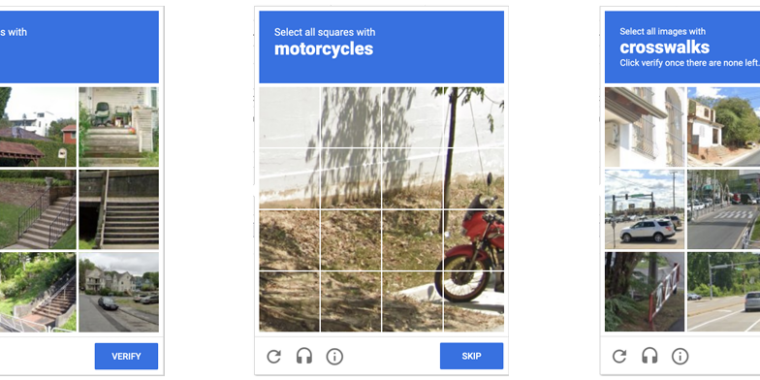- cross-posted to:
- technology@lemmy.zip
- technology@lemmy.world
- cross-posted to:
- technology@lemmy.zip
- technology@lemmy.world
Anyone who has been surfing the web for a while is probably used to clicking through a CAPTCHA grid of street images, identifying everyday objects to prove that they’re a human and not an automated bot. Now, though, new research claims that locally run bots using specially trained image-recognition models can match human-level performance in this style of CAPTCHA, achieving a 100 percent success rate despite being decidedly not human.
ETH Zurich PhD student Andreas Plesner and his colleagues’ new research, available as a pre-print paper, focuses on Google’s ReCAPTCHA v2, which challenges users to identify which street images in a grid contain items like bicycles, crosswalks, mountains, stairs, or traffic lights. Google began phasing that system out years ago in favor of an “invisible” reCAPTCHA v3 that analyzes user interactions rather than offering an explicit challenge.
Despite this, the older reCAPTCHA v2 is still used by millions of websites. And even sites that use the updated reCAPTCHA v3 will sometimes use reCAPTCHA v2 as a fallback when the updated system gives a user a low “human” confidence rating.



School busses and regular busses look completely different. What do those look like in your country?
Well here in, not the United States of America land, we just have busses. I was not aware that busses required a special magic paint job.
I suppose the paint job prevents school shooters wasting their time.
So if your regular bus is shown next to a bus that’s not “just a bus”, and you’re asked which one is a school bus… What would you answer?
Same as any bus
So if you see a picture that obviously a regular bus, alongside a different bus, what would you infer from that when asked which bus is not the same as “any bus”?
How would you know what is a regular bus and what is not a regular bus for a given country?